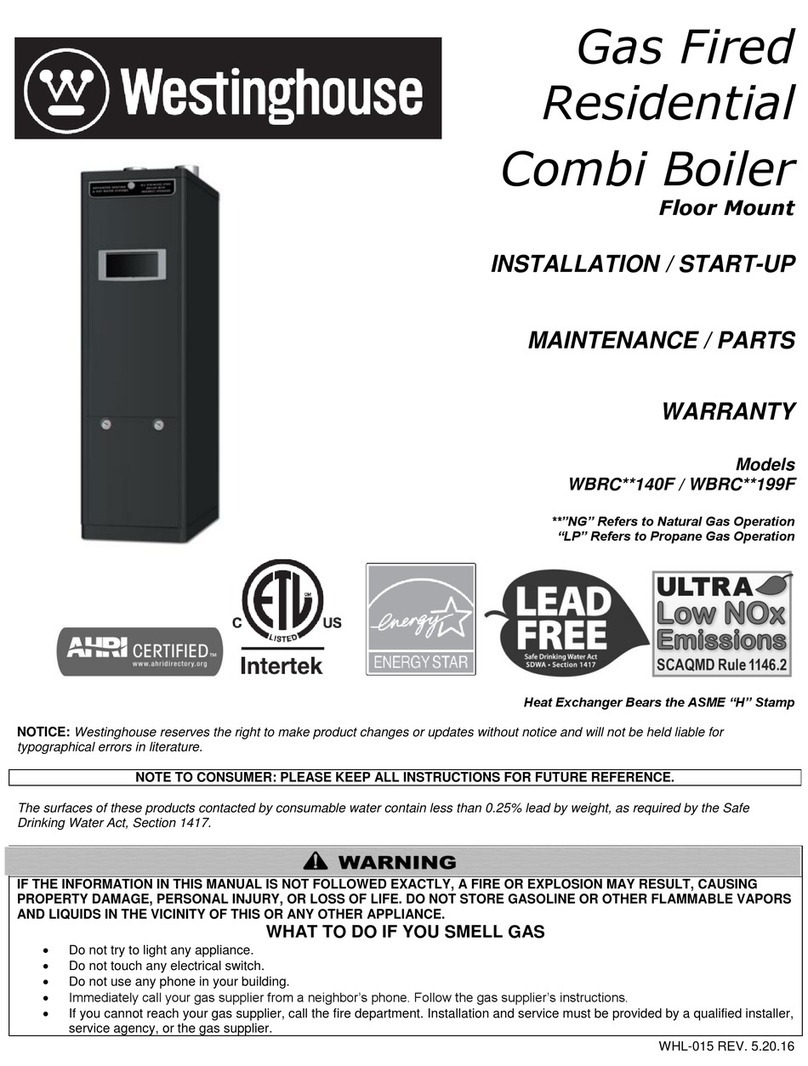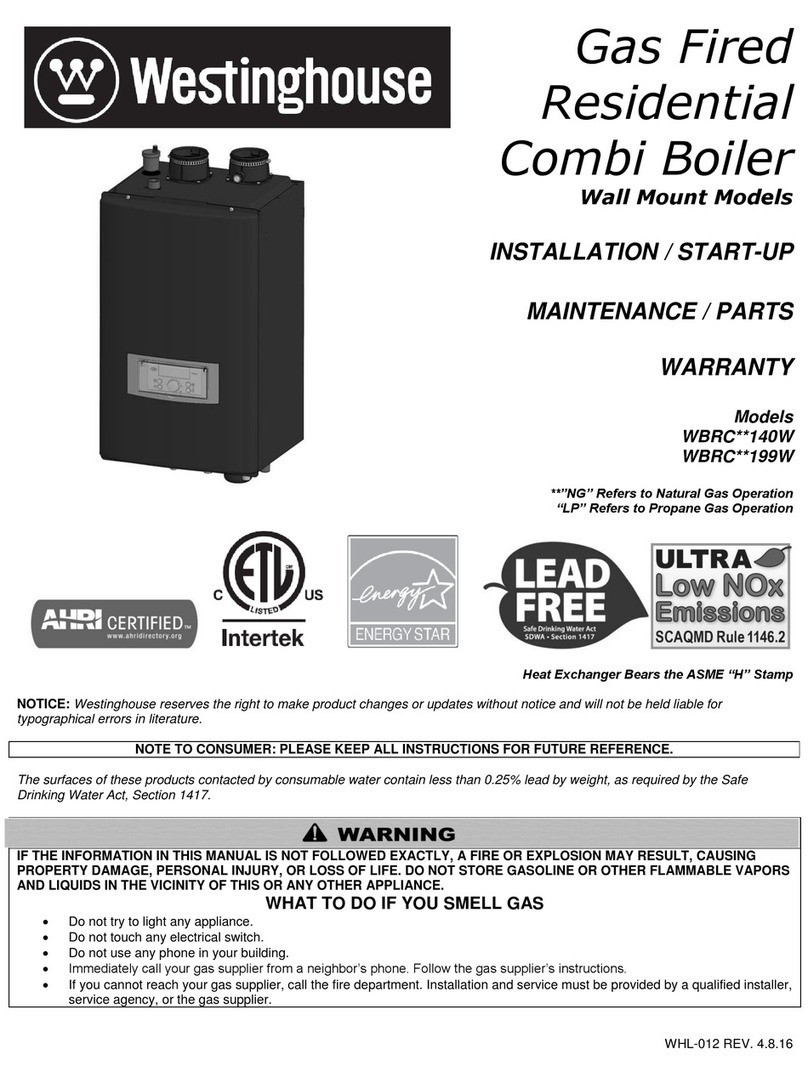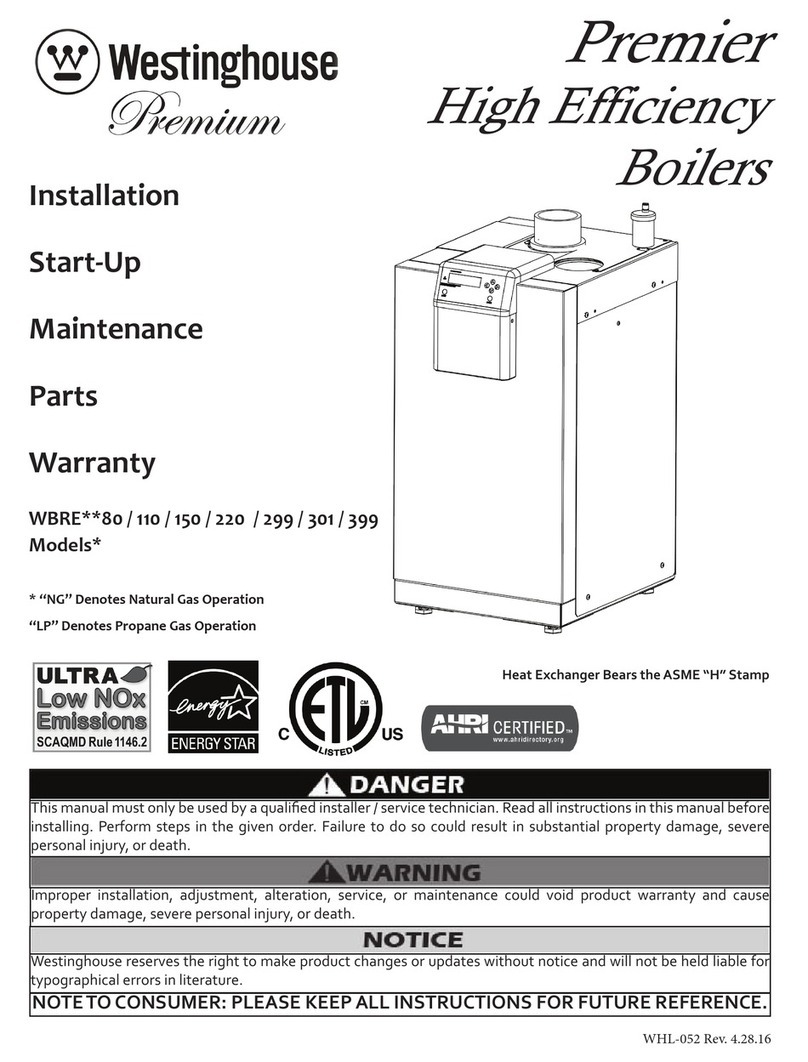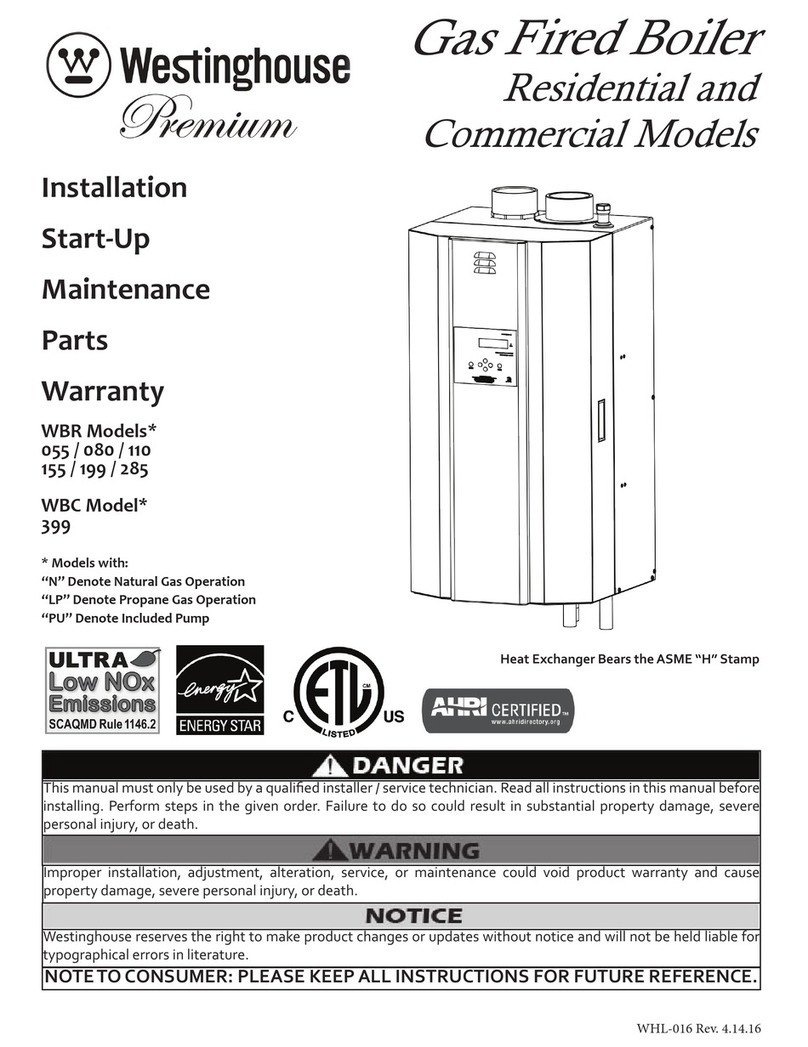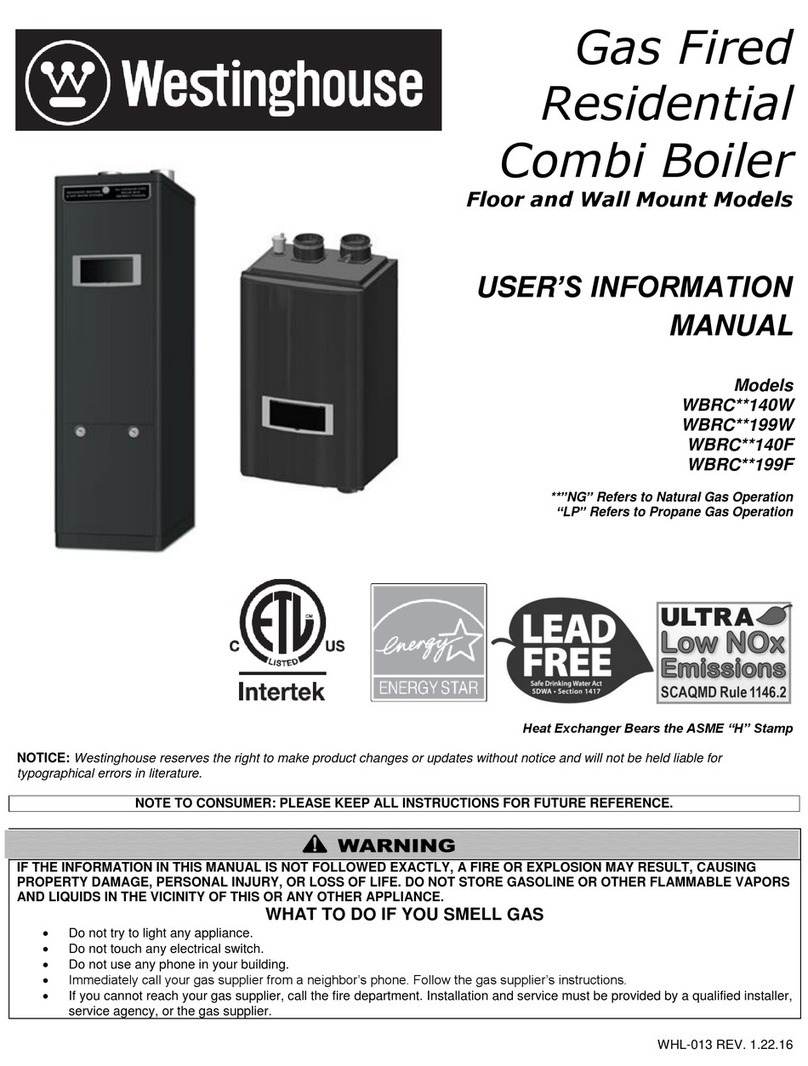
WHL-033 Rev. 1.29.16
7
Stainless Steel Heat Exchanger
The highly ecient stainless steel heat exchanger is designed
to use the cold water return from the system and extract the
last bit of heat before it is exhausted.
Modulating Combustion System
The combustion system modulates the output of the burner
during operation to match system demand and achieve
the control set point while in operation. The set point can
change by internal or external signals to enhance the overall
performance of the system.
Control
The integrated control system monitors the system and
regulates fan speed to control boiler output. This allows the
boiler to deliver only the amount of heat energy required
and nothing more. The system can be further enhanced by
installing an indirect water heater to provide domestic hot
water.
The control can regulate the output of multiple boilers
through its cascade system function. The cascade system is
capable of connecting up to eight boilers together in such a
way that they function as one boiler system. This allows for
greater turn down ratios and provides systematic control of
the multiple boilers in an installation to minimize downtime
and maximize eciency.
The cascade system works by establishing one boiler as the
master and the other connected boilers as followers. The
master boiler requires a sensor to provide feedback on set
point temperature in order to adjust heating input from the
connected boilers. Each cascaded boiler will have its own
pump to provide maximum ow and control heat exchanger
ow rate.
NOTE: When using a system sensor, pipe insulation must be
wrapped around it to improve temperature measurement
accuracy and increase system eciency.
Text Display and Operational LED Light Indicators
The display allows the user to change system parameters and
monitor system outputs.
Gas Valve
Senses suction from the blower, allowing gas to ow only if
powered and combustion air is owing.
Integrated Venturi (500 Models) or Swirl Plate (850 Models)
Controls air and gas ow into the burner.
Burner
The high grade stainless steel burner uses premixed air and
gas to provide a wide range of ring rates.
Spark Ignition
The burner is ignited by applying high voltage through the
system spark electrode. The spark from the electrode ignites
mixed gas o of the burner.
Supply Water Temperature Sensor
This sensor monitors the boiler outlet water temperature
(System Supply). The control adjusts boiler ring rate so the
supply temperature will match the boiler set point.
Return Water Temperature Sensor
This sensor monitors boiler return water temperature (System
Return).
Temperature and Pressure Gauge
Allows the user to monitor system temperature and pressure.
Electrical eld connections with terminal strips
The electrical cover allows easy access to the clearly marked
line voltage and low voltage terminal strips to facilitate wiring
the boiler.
Condensate Collection System
This boiler is a high eciency appliance and will produce
condensate. The condensate collection system has a oat switch
which monitors condensate level and prevents condensate from
backing up into the combustion system. Inside the collection
system is a built in trap which seals the combustion system from
the connected drain. This condensate should be neutralized to
avoid damage to the drainage system or piping.
Flow Protection
The optional ow switch is designed to protect the boiler
during low ow conditions. The boiler control also monitors
ow through the heat exchanger by monitoring the return and
supply sensors and will shut down the burner before overheating
occurs.
Outdoor Sensor
The control adjusts unit set point based on the outdoor
temperature measured by this sensor to provide greater
eciency.
System Sensor (Optional)
This sensor is designed to be used in a cascade system. The
system pipe sensor measures the temperature of return water
and communicates with the control system to modulate the
ring rate of the connected boilers.
NOTE: When using a system sensor, pipe insulation must be
wrapped around it to improve temperature measurement
accuracy and increase overall system eciency.
0-10 Volt Input
Allows the installer to connect a BMS (Building Management
System) to control the boiler.
Indirect Tank Sensor (optional)
Monitors storage tank temperature.
C. Optional Equipment
Optional equipment available from Westinghouse (and Part #):
• System Sensor (7250P-324)
• Indirect Tank Sensor (7250P-325)
• 4” Stainless Steel Vent Termination Kit (V2000)
• 6” Stainless Steel Vent Termination Kit (V3000)
• High and Low Gas Pressure Switch Kit with Manual Reset
(7350P-600)
• UL 353 Compliant Low Water Cut-O Interface Kit with
Manual Reset (7350P-601)
• Alarm System (to monitor any failure) (7350P-602)
• PC Connection Kit (7250P-320)
• Condensate Neutralizer (7350P-611)
• Caster Kit (7350p-604)
• Stacking Kit (7350P-603)
• Flow Switch Kit (7350P-605)
Part 3 - Prepare the Boiler
Remove all sides of the shipping crate to allow the boiler to
be moved into its installation location. Pick the boiler up by
the lifting rings to avoid damage to the boiler enclosure. Use
either solid 3/4” diameter black iron pipe or lifting straps to lift
the boiler o its shipping crate. The boiler is heavy. At least two
individuals are needed to properly handle the boiler. The boiler
is also equipped with leveling feet that can be used to level the
boiler properly on an uneven location surface. If surface ooring


